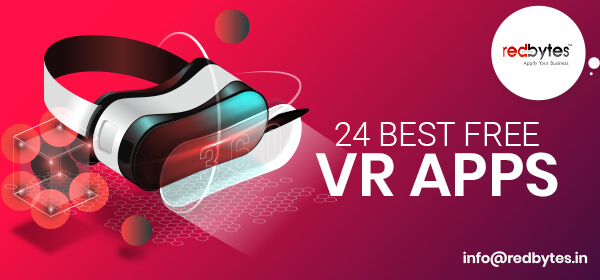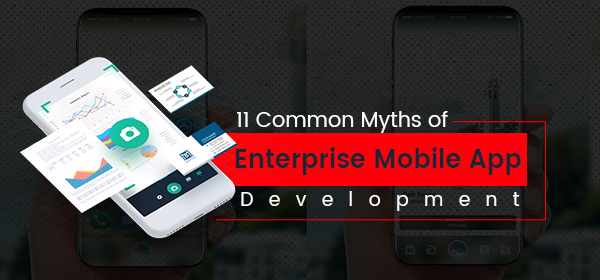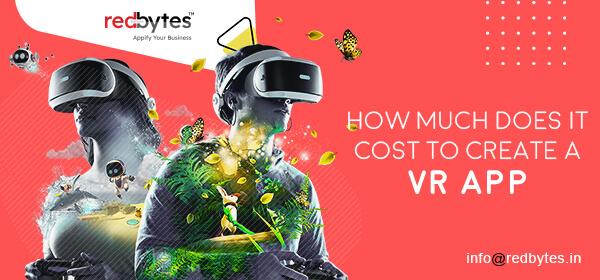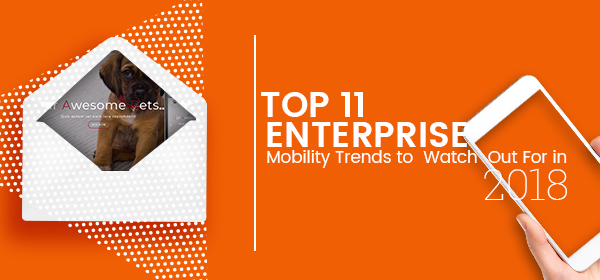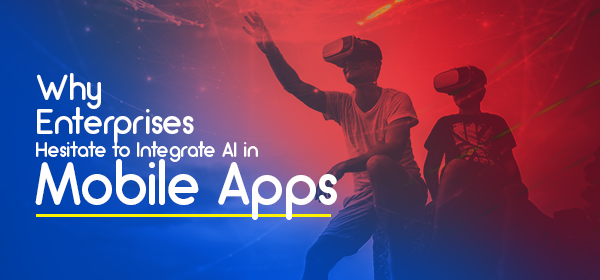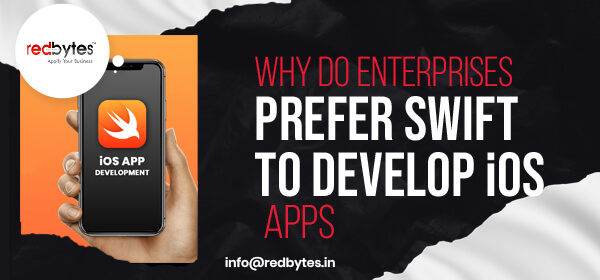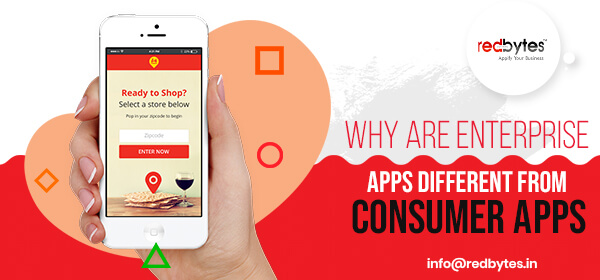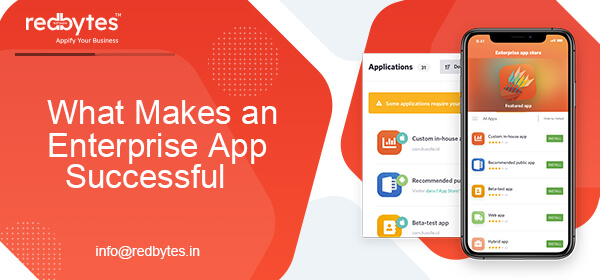VR apps offers a truly immersive experience and offers a sensory experience that can transport the individual to virtually any place, well ‘virtually’. While the space has been taken up by expensive as well as inexpensive headsets and fancy gear to enjoy the VR apps experience, it is now possible to leverage your smartphones display for a good VR experience.
All that you need is to get the right VR apps on your smartphones.
Here are 24 top VR apps that will transform your smartphones into a great VR experience.
1. Within VR

Founded by Aaron Koblin and Chris Milk “WITHIN” brings together the most immense experiences from the finest VR’s around the world. WITHIN is an all in one VR content app that distributes VR, XR and AR experiences across web, mobile and other consoles.
App Features
- New contents added constantly
- Available on iOS, Android, Daydream, Gear VR, Oculus Rift, PlayStation®VR, Steam®VR, Viveport and WebVR platforms.
- A broad content library which is getting bigger by time
Ratings: 4.5/5
Installs: 1,000,000+
2. Google Earth VR

The whole new Google Earth VR lets users explore the world from a totally new perspective. With this app, the whole world becomes within your reach.
This app can be of great use for people everywhere to explore our planet in detail.
It also consists of a new search function that prompts the VR keyboard that can be manipulated according to your headset controller.
App Features
- Helps you discover the world’s most incredible places
- Can measure heights & area
- Zoom on down to Google street view database
- Enjoy virtual tourism
- Spin the globe at 360 degrees view
Ratings: 4.4/5
Installs: 100,000,000+
3. VR Space

VR space is an awesome app solution that facilitates users to enjoy a VR universe. Here, you can conduct a real tour of sun, star and planet systems with a connected VR device.
Being a VR headset game, it doesn’t need any additional touch controls. This VR app offers a blissful VR journey through the whole universe with HD graphics of every planet and space objects.
App Features
- Experience ambient music.
- Stunning view of space and planets.
- Optimized Fulldive VR adventure.
- Immersive VR Interface
Ratings: 4.4/5
Installs: 500,000+
Download: Android
4. GoPro

GoPro is a godsend for the digital era. A simple device capturing photos and videos from hard-to-reach places. It enables a 360-degree view of every image captured. The app never can make any great shots miss from your view or camera.
Once you click a wide-angle/fish lens image, it is transferable within seconds to your multiple devices. It is easy to play your 360-degree videos offline and instantly share with friends without an internet connection.
App Features
- Limitless cloud backup & storage
- Rectilinear planet projections.
- Support multiple formats.
- Live VR events.
Ratings: 4.3/5
Installs:10,000,000+
5. Sites in VR

Sites in VR help you reach any destination you wish to visit. Users can feel as if they are roaming around the famous monuments and even mars. Starting from ancient architecture to most popular tour landmarks, sites in VR help you in excellent virtual touring.
You can integrate this app with any other VR apps like Cardboard as a perfect alternative with detailed settings for correcting visuals or other parameters.
App Features
- Turn on/off stereoscopic mode.
- PAN, Zoom, and more movements.
- An auto collaboration of sensors.
- Quality 360° panoramic images.
Ratings: 4.3/5
Installs:1,000,000+
Read Also : 20 Best Online Multiplayer Games 2023
6. Titans of space

Titans of space provide an incredible virtual reality tour of our planets and the solar system. Exciting soundtracks accompany the visual tour and make your VR experience into the next level.
There is a cockpit dashboard where the latest tour spots on the solar system are shown and you can easily choose from them. A purchase option helps you know very details of space objects and unlock a 50-minute voice-over.
App Features
- Drift correction mode.
- Multiple language support.
- Full control over a multitude of options.
- Work with Google cardboard.
Ratings: 4.3/5
Installs: 1,000,000+
Download: Android
7. Google Art & culture

Google Arts and culture invite users into the world of mindblowing virtual tours to the famous spots and heritage sites at fingertips. Besides, you can click pictures and compare it with classic artworks & share them with your friends.
It allows a personalized experience where you can click portraits and compare them with the art that looks like. You get a chance to visit world-class museums and view HD quality 360-degree videos with the app.
App Features
- Immersive pocket gallery.
- Point and recognize artworks.
- Weekly highlights & notifications.
- Customize the artwork gallery.
Ratings: 4.2/5
Installs:10,000,000+
8. VR Theater

VR theatre is a dedicated VR app for Cardboard. Users can turn their heads around and enjoy movies in true virtual reality. The app works fully via your sight control and an array of options to stimulate the visual experience.
You can view normal,2D, and 3D movies with VR theatre. It also has an additional feature of supporting panoramic 360-degree and 180-degree movies. There are many configuration setups for users and create their theatres themselves.
App Features
- No headset controls are required.
- Easy to use UI
- Supports majority file formats
- Customized design choices.
Ratings: 4.2/5
Installs:1,000,000+
Download: Android
9. VR X Racer

VR X racer is an extraordinary VR aerospace game enjoyed by all age groups. The game has two modes namely hand mode race and virtual reality mode race. Users become the protectors of earth defeating UFOs, spaceships, missiles, etc.
You can feel like you are fighting on an extraterrestrial war in reality. Users get credits after each level and can buy spaceships.
App Features
- Stunning 3D effects
- Multiple easy & hard levels.
- Superb animations & graphics.
- Amazing & simple controls.
Ratings: 4.2/5
Installs:1,000,000+
Download: Android
10. Google Street View

This is definitely a VR app that you should have on your iPhone, as it has possibly the largest collection of locations. You name the place and the app seems to have it.
And it offers additional features like giving you the flexibility to include your own collections to the app. If you would like to good look at the most sought after locations on the globe, here’s your chance to do it virtually.
App Features
- Explore world landmarks &step inside locations
- Allows 360º photographs and can publish to Google Maps to share with the world
- Consists of spectrum of Street View ready tools
Ratings: 4.1/5
Installs: 1,000,000,000+
11. Fulldive VR

Full dive VR is a well-known VR platform where users can earn money, bitcoin, or other cryptocurrencies by browsing VR content. Fulldive VR works with the Fulldive browser and can be operated on the Cardboard or daydream app.
Users can just engage in listening to music, watching movies, etc in Virtual reality and earn money. It contains about five hundred million plus games and one million-plus video which you can view and start getting a passive income too.
App Features
- Simple navigations
- Filtered contents from approved sources
- Exciting VR camera and video player
- Affordable & acvessible platform
Ratings: 4.1/5
Installs:1,000,000+
12. Var’s VR Video player

Var’s VR Video player is one of the best VR viewers for mobile phones. It has a pro version available on the play store with more exciting features. This free app lets users enjoy 3D videos with ultimate VR quality along with complete control of the app.
Users view videos with perfect head tracking response and control all movements and display parameters. Unlike other VR players, Var’s support subtitles & watch movies of any language.
App Features
- Static/Float modes for nonspherical videos.
- Requires Google Cardboard.
- Easily configurable settings.
- Immersive VR experience.
Ratings: 4/5
Installs: 10,000,000+
Download: Android
13. VR Roller Coaster

This has got to be one of the best roller coaster rides ever, at least on VR apps. It gives you a near real experience with some crazy loops, twists and turns that will give you the same feeling as an actual roller coaster ride.
To add to the feeling, the landscape depicted on the app, gives you the sensation of heights as you get to see skyscrapers and landmark buildings.
App Features
- Experience the real-life roller coaster ride using the VR headsets
- Google Cardboard powered stereoscopic rendering
- Exciting playing environment filled with buildings, noisy crowds, birds, riders &airship
Ratings: 3.9/5
Installs: 5,000,000+
Download: Android
14. Google Expeditions VR

This VR teaching tool allows you to lead immersive trips all over the world and get more virtual reality experiences in mountains, underwater and at any outer space that you visit.
An additional feature in the app the solo mode lets users explore over 600 different tours by themselves.
For this experience, users just need to download the app, drop phones to Google Cardboard and then ready for the adventure.
App Features
- Serves as a new way of learning for students with the help of AR & VR
- Allows teachers to guide students with 360° scenes and 3D objects
- Create your own virtual adventures
Ratings: 3.9/5
Installs: 1,000,000+
15. VR Haunted house

VR Haunted house is a thrilling app with any number of paranormal activities active on both android and iOS platforms. You can play the game in VR cardboard or normal mode.
Users are the hero of the game who shall protect the house from ghosts and unusual monsters. There are easy, medium, and hard levels with different horror sounds and animations. You can easily play the game in automatic mode is at the center of the action.
App Features
- Easy Bluetooth gamepad controls.
- Magnet sensor to stop & examine the place.
- Manual mode and 360-degree view.
- 24/7 technical support.
Ratings: 3.9/5
Installs: 1,000,000+
Read Also : 24 Best Video Chat Apps 2023
16. Google VR services

Google has established its best services on Virtual reality too. As the name implies, these are VR services supporting Virtual reality features on cardboard, Daydream, and such VR apps.
Google VR services include functionality entering, resuming, and exiting from the app, connecting VR headsets or other devices, and more. Daydreamer like apps dysfunction once you uninstall Google VR Services.
App Features
- Timely notifications on VR devices/apps.
- Quickly pair with VR headsets/controllers.
- Provide better VR functionality.
- Simple and Interactive UI.
Ratings: 3.8/5
Installs: 100,000,000+
Download: Android
17. Google Cardboard

Google Cardboard is very much popular among VR apps. This single app makes many other VR apps active and runs on devices. Most of the gaming and video apps work on Google cardboard for a smooth 3D view or fish eye view.
Cardboard puts virtual reality on smartphones and lets users view contents, install apps with wonderful VR experience. The app has a set of in-built VR demos from which you can choose one or get new apps. Carboard along with the Cardboard viewer opens up the full version of the app.
App Features
- Exciting Tour guide and photosphere feature.
- Fun & Simple Virtual Reality.
- Immersive experiences
- Easy to use UI.
Ratings: 3.8/5
Installs:10,000,000+
18. Oculus

Oculus VR device allows you to access thousands of VR content dedicated to you. Oculus stores help users to know about live VR shows or select content from existing collections.
Unlike other apps, Oculus has a unique feature of interactivity where you can connect with your friends and enjoy together. Oculus notify about the recent contents and your friends who are active in the virtual world instantly.
App Features
- Manage multiple oculus devices
- Browse and buy contents from the Oculus store
- Reserve seats for VR events in advance.
- Unlimited Video Casting.
Ratings: 3.8/5
Installs: 1,000,000+
19. Deep space Battle VR

Deep space battle VR is a completely free fast-paced VR shooter game. The game is exclusively made for Google cardboard. The app gives you a chance to become a lone space pilot defeating the shadow fleet coming against.
Deep space makes you feel like you are at galactic spaceships through immersive Virtual reality. The app contains amazing screen shattering effects with powerful audio.
App Features
- No in-app purchases.
- Customizable space rides.
- Auto-firing options.
- Fun and exciting VR game.
Ratings: 3.8/5
Installs:1,000,000+
Download: Android
20. VR Media Player 360

VR Media player is one of the best VR apps that let users have a wide view of the content you like. It can display movies and photos in your local storage in 360° and 4k video quality.
The app also enables its users to zoom content by natural pinching and thus, a user-friendly design and navigations. Besides from the local storage, you can video via URL.
App Features
- 3D & Full-screen view
- Gyro sensor rotation.
- Support an Equirectangular format.
- Fisheye viewing of photos & videos.
Ratings: 3.8/5
Installs:1,000,000+
Download : Android
21. Youtube VR

Youtube VR is a perfect partner for users who wish to experience VR on the favorite video channels, creators, or any content. Youtube showcases thousands of videos and you can turn this ordinary platform into your own virtual reality experience.
Every video you watch has a 360-degree view putting you at the center of the action. The videos make you feel in it as the detailed in-depth sounds too play a great role in your VR experience.
App Features
- Switchable voice and keyboard controls.
- Launched via the Daydream app.
- High-quality spatial sound.
- Complete signed-in experience throughout.
Ratings: 3.7/5
Installs:5,000,000+
22. Veer VR

Enjoying your favorite videos is now easier with Veer VR. The app stimulates and lets you enter into a world of movies and animations with High-quality VR features.
You can watch any movie you wish in multiple VR devices that enable an immersive experience for you. The movies and shows are filtered from award-winning categories and film festival line-ups. Veer VR supports all mainstream VR headsets.
App Features
- Single account for all devices.
- Preview, bookmark, and purchase titles.
- Truly awesome app interface.
- Support 360-degree panoramic videos.
Ratings: 3.7/5
Installs: 5,000,000+
23. VR Fantasy

Virtual Reality stimulates you into a dreamy world delving you into a 3D environment. VR fantasy makes you that ancient magical fortress who fights with a sword to complete each level.
The fortress is you and you can feel & roam around the dungeon as real. Many enemies appear right in front of you & you defeat them to reach the exit. This VR adventure game allows you to find out unique weapons and more thrilling activities.
App Features
- A VR viewer like cardboard is needed.
- Amazing live game experience.
- Smooth & stable VR activities
- Low cost & frequent upgrades.
Ratings: 3.7/5
Installs:1,000,000+
Download: Android
24. Daydream

Daydream app enables users to have a high-quality virtual reality experience. The app is a package of an ever-growing collection of apps, games, and movies.
It allows you to enjoy a personalized world of VR content with a ready headset and controller. Daydream-ready phones and headsets let users explore a new world of immersive games and your favorite VR cinemas on the go.
App Features
- Intuitive Interface
- Browse Featured content
- Versatile collection of apps and games.
- Launch Daydream experiences.
Ratings: 3.5/5
Installs: 5,000,000+
Download: Android
Read Also : 24 Best Stargazing Apps 2023
Conclusion
On the whole, VR is taking off in a big way and many companies in every part are working on this experience creating immersive solutions for a new kind of interactive experience.
Even if you’re not ready to make a move into VR right now, it’s still ok but, it’s an interesting technology to pay attention.
